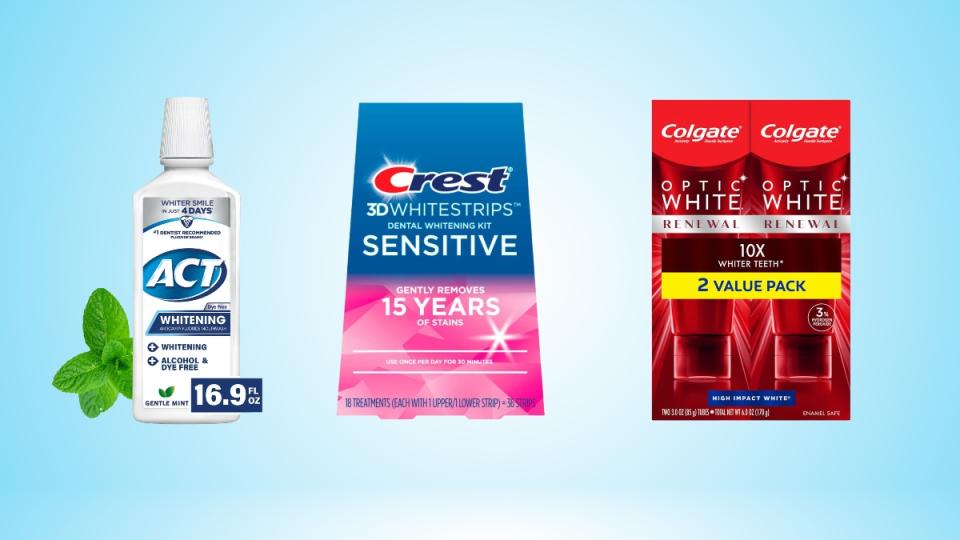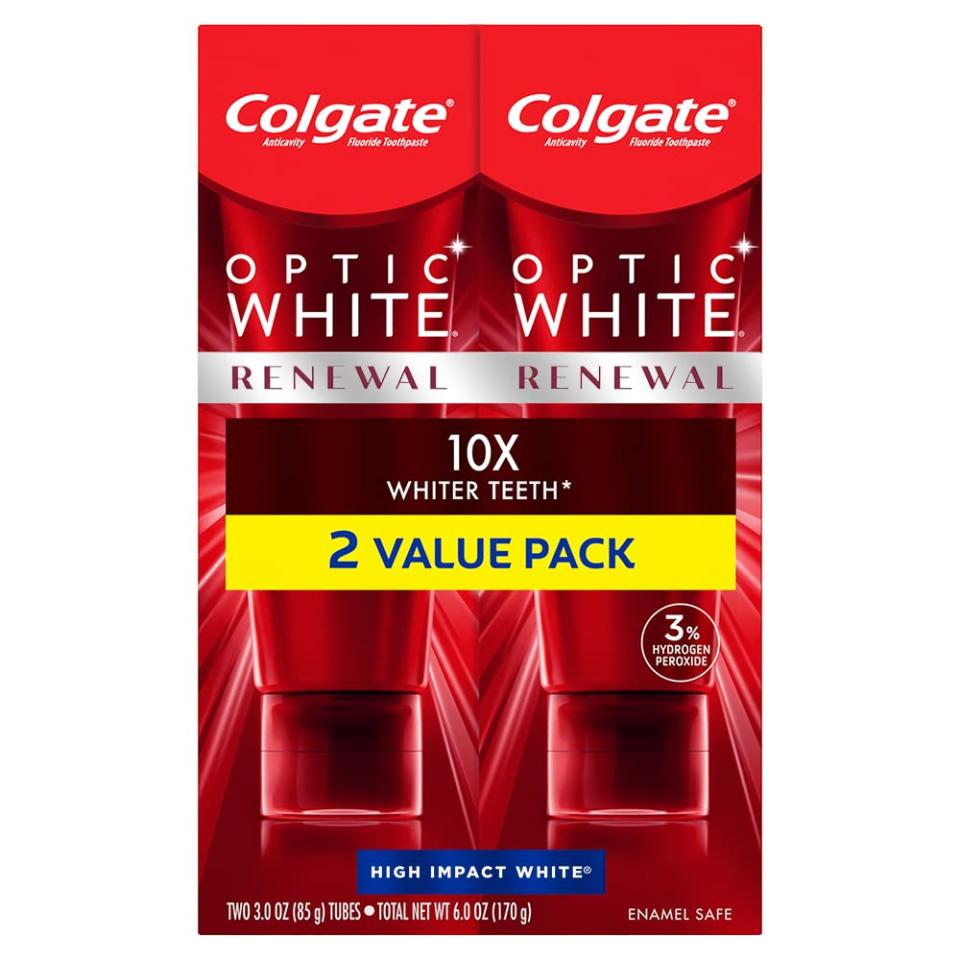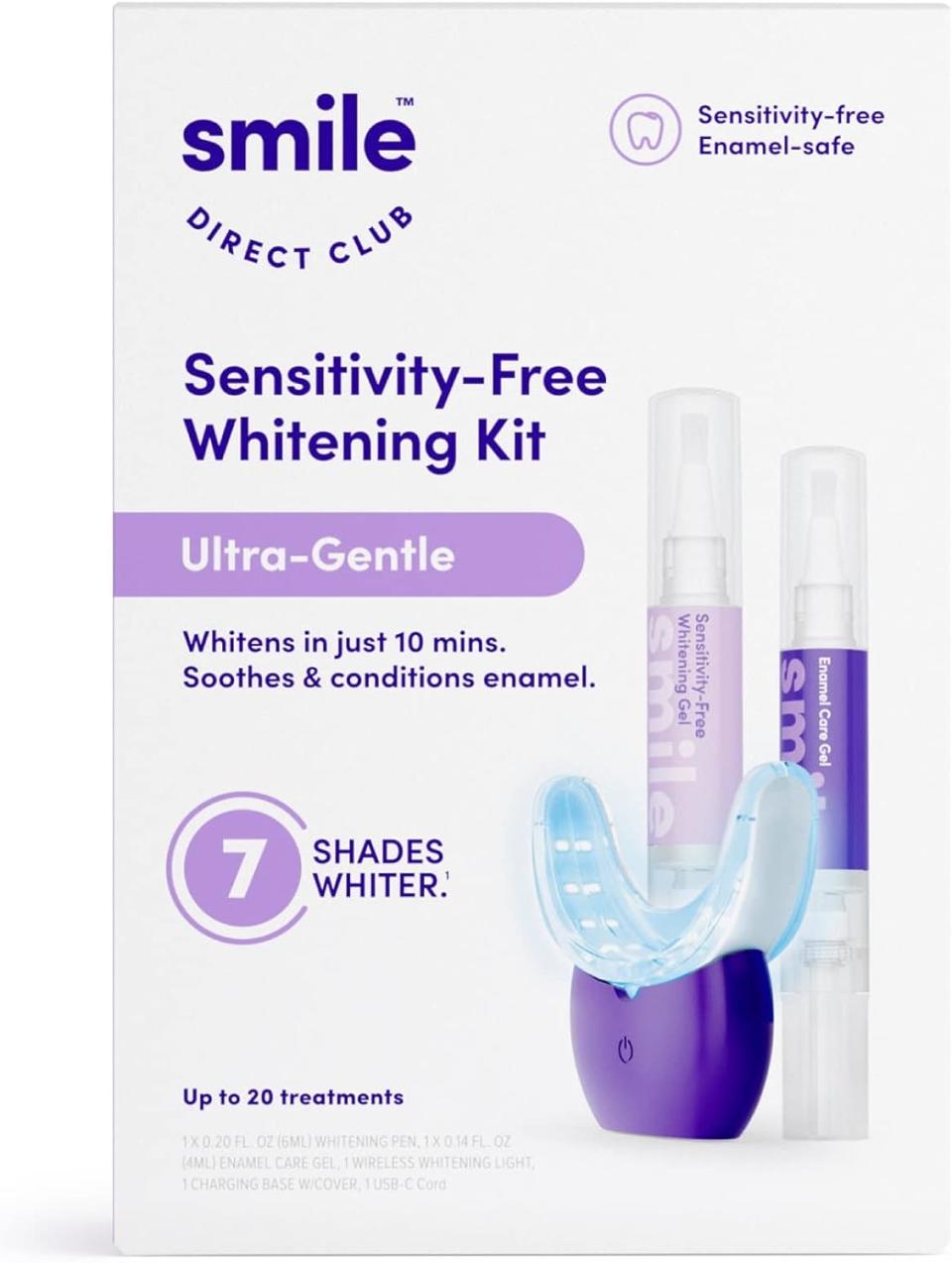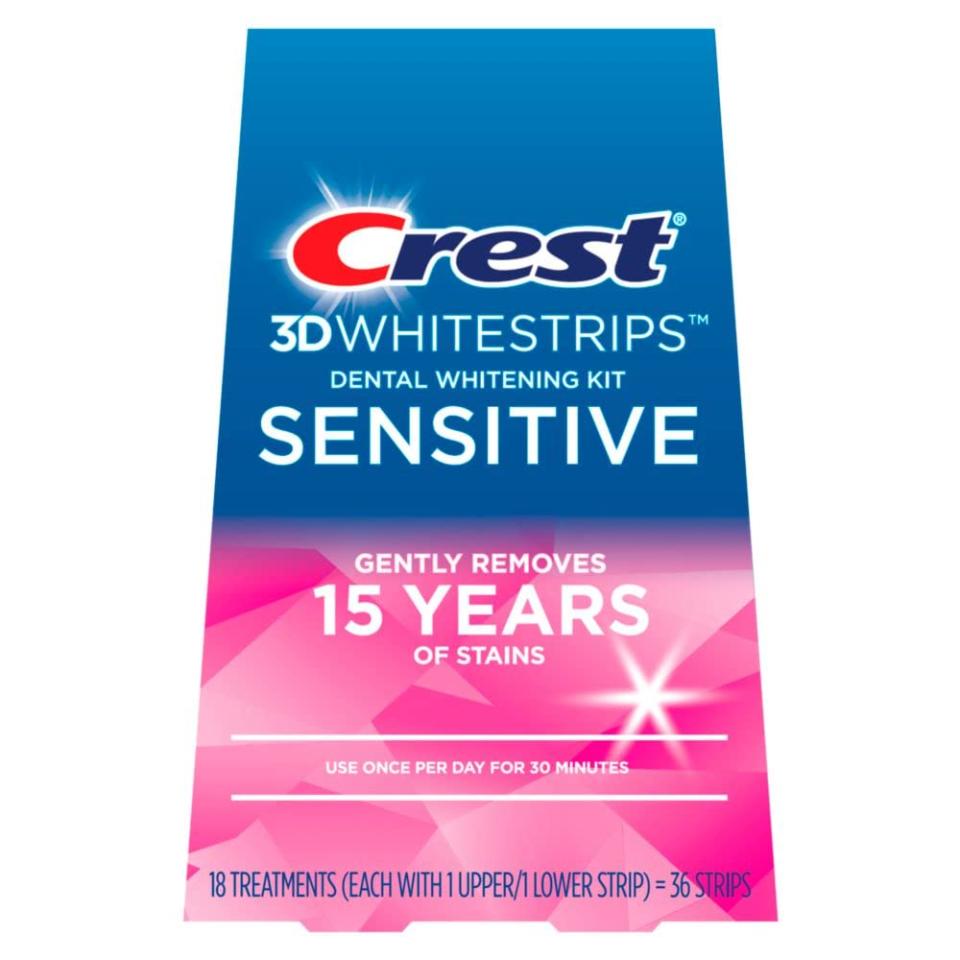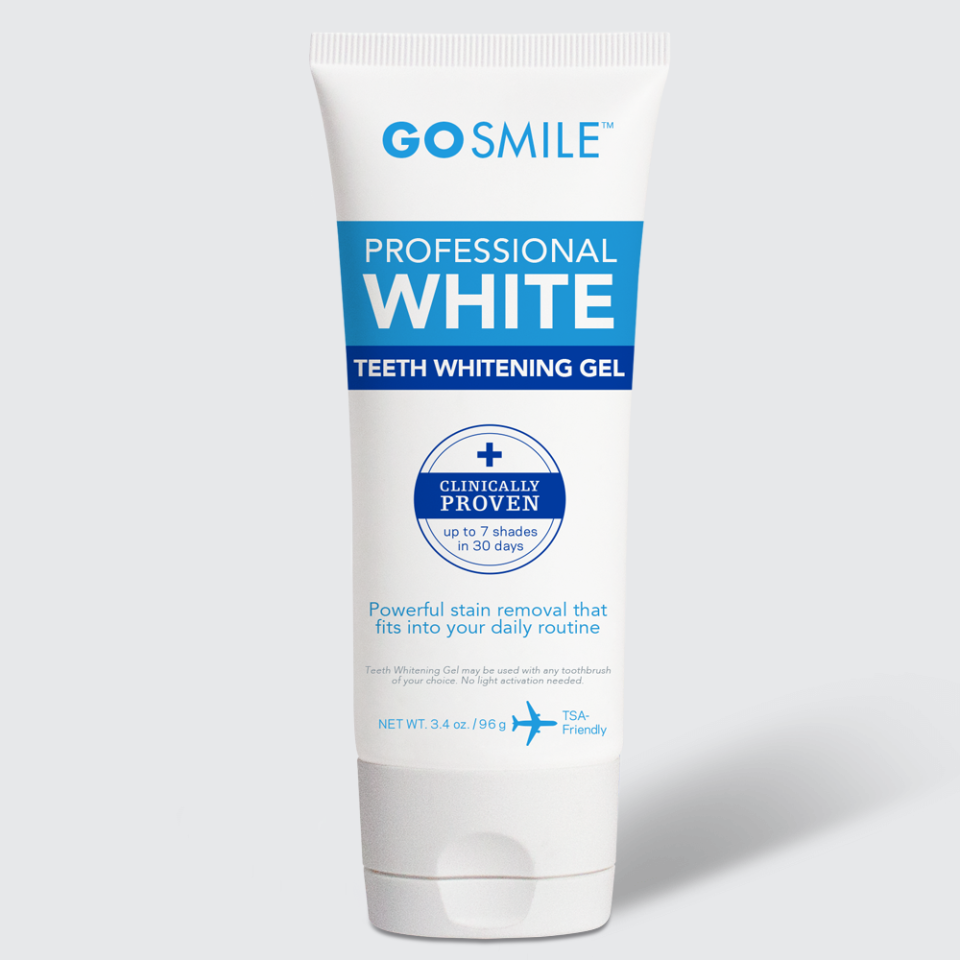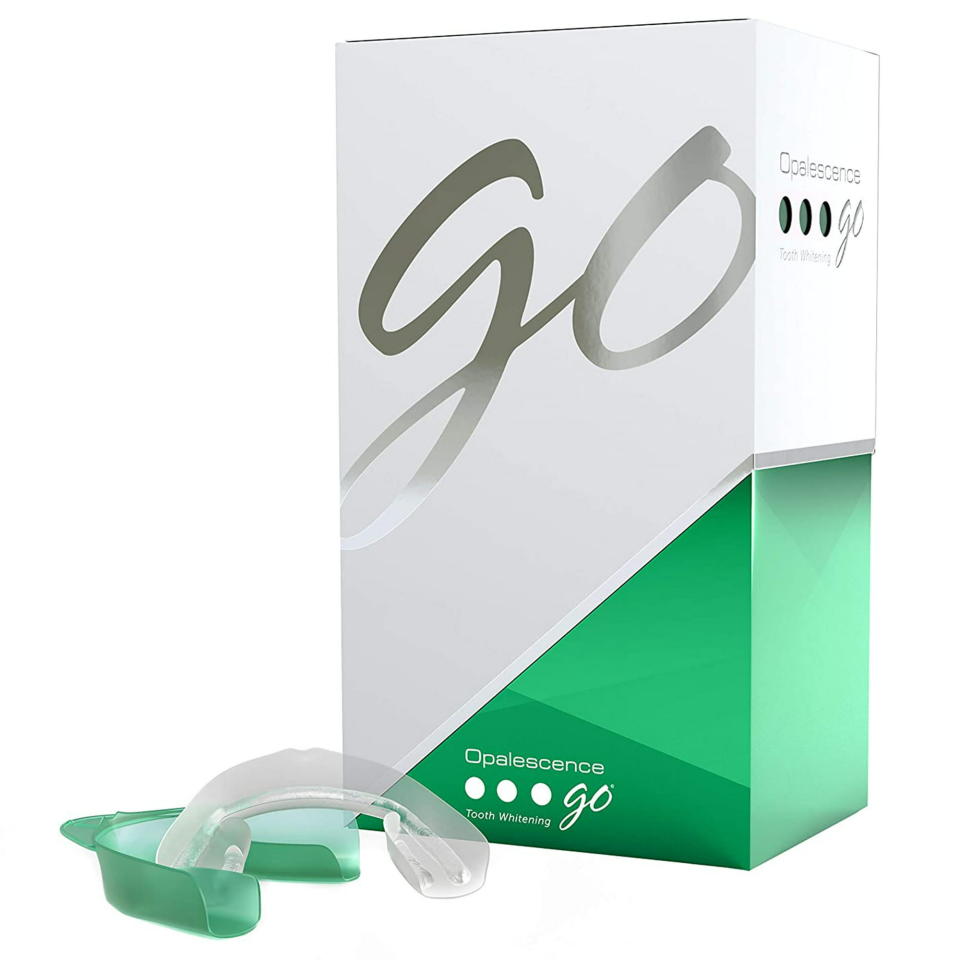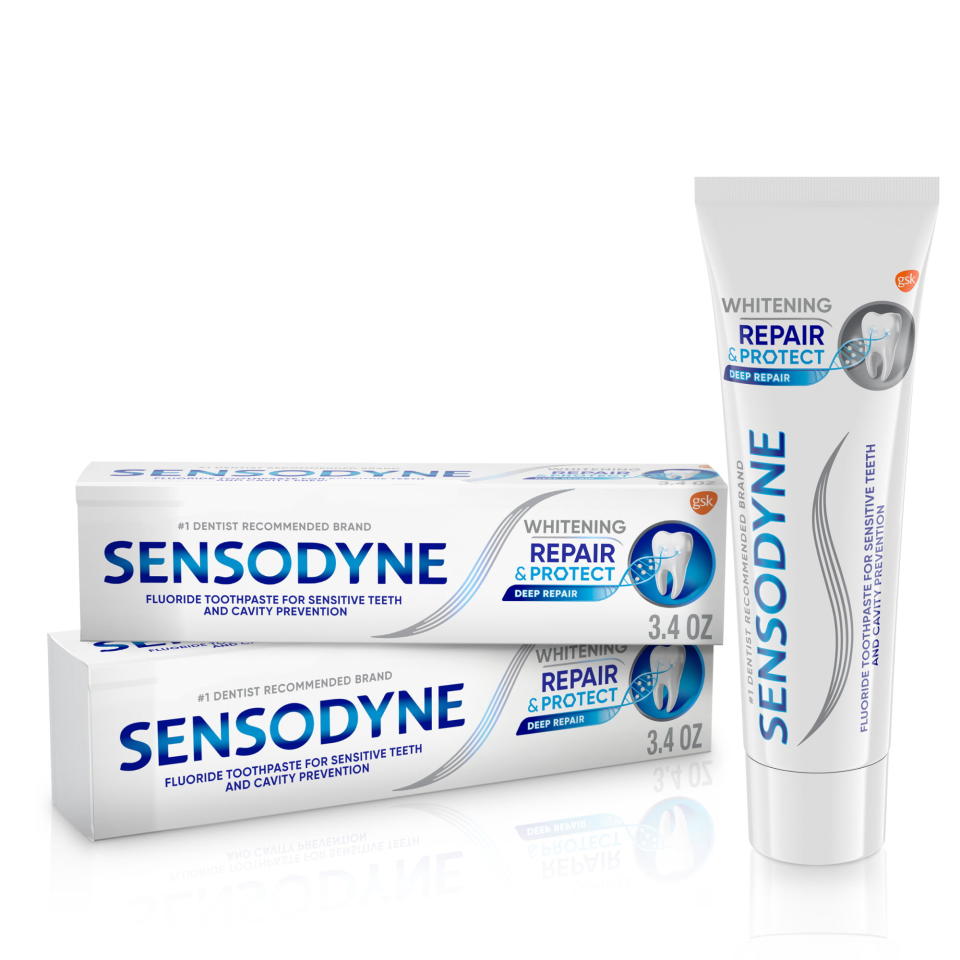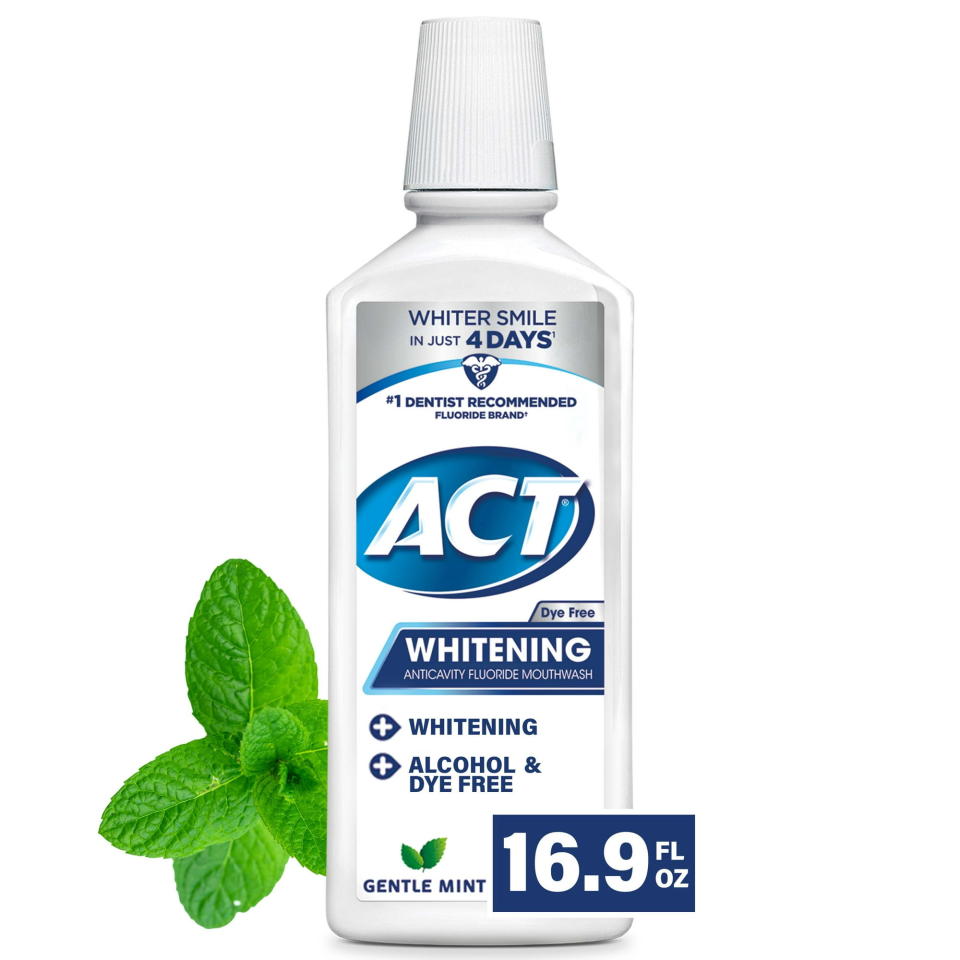Woman's World aims to feature only the best products and services. We update when possible, but deals expire and prices can change. If you buy something via one of our links, we may earn a commission. Questions? Reach us at shop@womansworld.com
Our teeth seem to lose a bit more luster every year, dimming our smile and confidence. And while whitening and brightening our teeth is a relatively simple and oftentimes, low-cost process, the sting that it can bring on for people with sensitive teeth can have us hesitant to try it. Luckily, there are teeth whitening for sensitive teeth products on the market that are more likely to work without creating the pesky zaps and zings that those of us with sensitive teeth are way too familiar with. That means they can take years off your look — pain-free.
What causes teeth yellowing
Throughout our 40s, most yellowing is due to a buildup of surface stains from things like berries, coffee and wine, explains Lana Rozenberg, DDS, a cosmetic dentist in New York City. Once we hit 50, the surface enamel on teeth starts to weaken, Dr. Rozenberg explains, allowing stains to seep into the “cracks." By the time 60 rolls around, as enamel erodes, it exposes dentin, the gray or yellow layer under the tooth’s surface. This leads to dull discoloration, plus makes teeth more prone to sensitivity — the sharp zings we get when we eat or drink something hot or cold. And that means the more intense whitening methods we used in the past can be too painful now.
What causes teeth sensitivity — and how does whitening worsen it?
During whitening, there are little tubes inside our teeth that “open up” and allow for the whitening product like hydrogen peroxide to travel toward the nerves of the teeth with much more ease than normal, explains Lawrence Fung, DDS, of Silicon Beach Dental in Culver City, California. This can manifest in what he calls a “slight pain, which is the zing, like when you eat or drink something cold.”
If your teeth are sensitive to begin with, you’re more prone to sensitivity during whitening. “Some of the main culprits in teeth sensitivity include gum recession (usually from brushing improperly) and lost enamel due to overzealous brushing or acid erosion," explains Michael Kosdon, DDS, a cosmetic dentist in New York City. "People who grind and clench their teeth can cause hypersensitivity due to chipped/damaged enamel. Lastly, people who have cavities and extensive dental work like deep fillings and crowns can have a lot of sensitivity.”
The amount of birthday candles on your cake can be a factor too. Dr. Kosdon explains that not only do our gums typically recede over the years, but “from normal wear and tear, teeth get shorter over time as the enamel slowly wears away, exposing dentin which is the yellowish color material directly beneath the protective enamel.” The whitening result? Ouch.
Related: Dentists Finally Settle the Debate on Using Mouthwash Before or After Brushing
The best teeth whitening for sensitive teeth products
Best overall toothpaste : Colgate Optic White Renewal Toothpaste
Best LED kit : Smile Direct Club Ultra-Gentle Sensitivity-Free Teeth Whitening Kit with LED Light
Best strips : Crest 3D White Strips for Sensitive Teeth
Best gel : Go Smile Teeth Whitening Gel
Best trays : Opalescence Go Pre-Filled Whitening Trays
Best enamel-boosting paste : Sensodyne Repair and Protect Whitening Sensitive Toothpaste
Best mouthwash : ACT Whitening + Anticavity Fluoride Mouthwash
Is it safe to whiten with sensitivity?
Read More
For mild cases of sensitivity, it’s generally considered safe to whiten occasionally — though it’s smart to check with your dentist just in case.
“For sensitive teeth, there are two options: either whiten at home with a low-concentration over-the-counter white strip system or do an in-office treatment,” says Dr. Fung. Some may want to go the in-office route. Dr. Dalit Yadegaran, DMD, also of Silicon Beach Dental, says, “If you have gum recession, in-office whitening is recommended because your dentist will place a barrier over the areas of exposed root structure. A downside to at-home whitening is that unless the strips or trays are custom-molded to your teeth, the strips and trays are made off a generic template which doesn’t account for gum recession, which may leave you with more sensitivity.”
However, if your dentist clears you for an at-home treatment, Dr. Kosdon points out that looking for gentle products marked for sensitive teeth can be a better way to go, as they often have lower concentrations of the ingredients known to cause sensitivity like hydrogen peroxide. He adds, “You can try using the at-home products every other day and for less time to minimize the sensitivity.” Dr. Yadegaran agrees, explaining she recommends to her patients that with whitening products “moderation is key.” For example, she says, “It’s best to use a whitening toothpaste for the few days leading up to an event, and a non-whitening toothpaste for the rest of the week.”
What are the best at-home whiteners for sensitive teeth?
According to our experts and user reviews, these are the best options out there for people who want a DIY brighter smile without the agony:
Colgate Optic White Renewal Toothpaste
best overall toothpaste
Buy from Amazon, $12.99 (2 pack)
Why we like it
Whitens gently
Not damaging to enamel
Formulated with a low 3% hydrogen peroxide to help remove stains without damaging tooth enamel, this paste is one of Dr. Kosdon’s favorites. Reviews on Amazon rave about the way it gently whitens and the clean feeling it leaves behind, and some love the fact that it also happens to be vegan and gluten- and sugar-free.
Smile Direct Club Ultra-Gentle Sensitivity-Free Teeth Whitening Kit with LED Light
best LED kit
Why we like it
Fast results
Includes a fortifying enamel care gel
One of the clever ways this LED kit helps hold off sensitivity? By including an enamel care gel you use for 10 minutes after each whitening session to help sooth the area. With a patented wireless rechargeable light you can take with you on the go, this gentle whitening formula works effectively, according to its fans, with many hailing its fast results.
Crest 3D White Strips for Sensitive Teeth
best strips
Why we like it
Hands-free use
Extra gentle formula
These tried-and-true whiteners got a shoutout from all of the dentists we interviewed, with Dr. Kosdon explaining, “This product has been around for years and has consistently delivered good results with minimal sensitivity.” They’re also convenient — thanks to their strong grip, you can pop them on and go about your day while you’re wearing them. Dr. Yadegaran’s advice for getting the most out of these strips: “Be sure to floss and brush first, then dab your teeth dry with a paper towel before applying. The drier your teeth are, the easier it is for the whitening solution to work.”
Go Smile Teeth Whitening Gel
best gel
Why we like it
Shown in clinical trials not to trigger irritation or sensitivity
Mess-free application
Add this peroxide-spiked gel to your toothpaste and brush as usual for a whitening boost twice a day. It’s formulated to lift away stains effectively yet gently and was even shown in the brand’s clinical trials to leave behind almost no irritation or tooth sensitivity. It also gets bonus points for gliding on smoothly without leaving behind a mess.
Opalescence Go Pre-Filled Whitening Trays
best trays
Why we like it
Sensitivity-friendly levels of hydrogen peroxide
Great taste
Dr. Kosdon points to these little pop-in-and-go trays as a great choice for people with sensitivity, thanks to its low 10% concentration of hydrogen peroxide. You can wear them for 30 to 60 minutes per day, though you can start with 20 if you’re worried about the sting. Choose between two flavors, mint or melon, which reviewers say are tastier than some other products on the market.
Sensodyne Repair and Protect Whitening Sensitive Toothpaste
Best enamel-boosting paste
Buy from Walmart, $12.49 (2 pack)
Why we like it
Includes an additive that repairs enamel
Multitasks by protecting against cavities
Sensodyne is known to help minimize tooth sensitivity — in fact, Dr. Fung advises his patients to brush with the brand’s basic formula two to three weeks prior to whitening to help curb pain. So it’s no surprise its whitening formula gets high praise from sensitive users for helping protect from cavities while it whitens. The magic is in the repairing stannous fluoride inside, which fills the tubes of the teeth where those sensitive zaps occur to prevent pain.
ACT Whitening + Anticavity Fluoride Mouthwash
best mouthwash
Why we like it
Contains enamel-remineralizing fluoride
Free of alcohol and dyes
If you’re going to go for a whitening mouthwash, looking for one with fluoride is a good way to make sure it doesn’t damage your enamel, explains Dr. Kosdon. ACT gets love from people with sensitivities of all kinds for being free of alcohol and dyes. And it’s a great multitasker: It whitens teeth, freshens breath and remineralizes soft spots all at the same time.
Click through for more on teeth whitening:
Is Charcoal Toothpaste More Effective Than the Regular Kind to Whiten Teeth?
For a Brighter, Whiter Smile, Make These Foods a Part of Your Daily Diet
How to Whiten Your Teeth With Strawberries
Yellow Teeth? Make ‘Em Whiter in Minutes With These DIY Dental Hacks
Beth Shapouri is a beauty, wellness and lifestyle writer whose work has appeared in Allure.com, MarieClaire.com, GoodHouseKeeping.com and more. She lives in Brooklyn with her husband and a very cute dog.Visitbethshapouri.comto see more of her work.
